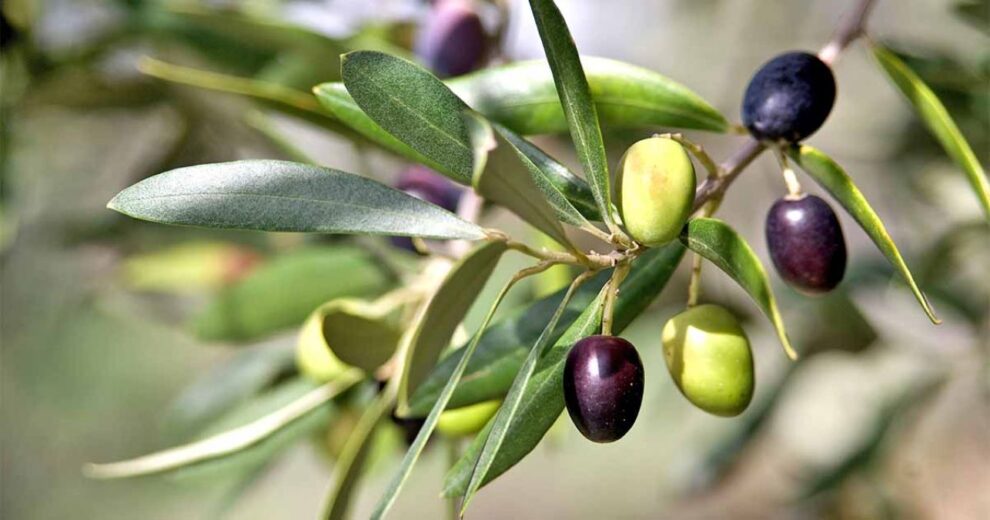Olives are among the oldest known cultivated trees in the world. They are a species specifically suited for a Mediterranean climate and are grown extensively along the Mediterranean coast. Olives were cultivated about 8000 years ago in Anatolia, where it spread to the Middle East, North Africa and Southern Europe (Efe). The olive was spread throughout Mediterranean Europe and North Africa very early, due to its ease of vegetative propagation and cultivation in dry climates (Jordi).
The olives and culture surrounding it were spread to surrounding areas by Muslims when the Roman Empire fell and the Umayyads carried it to Gibraltar in 711 where Andalusia’s large olive groves got their start. Arabs who stayed in Spain for about eight centuries (711–1492) contributed to the development and establishment of olive culture there (Efe).
The first recorded evidence of olive cultivation was in the excavations in Palestine and Jordan dating back to 3750B.C. Olives have been found in ancient Egyptian tombs and pyramids, such as tools used to squeeze olives that were discovered in the oldest step pyramid in Saqqara (2500 B.C), and images on the walls of that pyramid that depicted the olive squeezing process (Efe).
Olives have had religious significance in the Middle East for thousands of years. Olives, olive oil, olive trees and olive branches are mentioned many times in the bible and the Quran. The Greeks believe “it was Athena, goddess of wisdom and war who gave mankind the divine fruit. The Romans also coveted the precious crop, and later the Venetians shipped it around the Mediterranean from Palestine to Morocco and Spain” (Efe). Especially in religious households, olive oil was a precious daily commodity, and it was believed that large supplies of oil were a sign of prosperity and that disobedience to God would result in a loss of the olive crop (ODU). The oil “honored both God and men and was a component of the anointing oil of the high priest” (ODU).
One of the reasons people have taken interest in harvesting olives for thousands of years is due to their rich nutritional value. Olive trees are also a “very stable source of food production and income because the trees are extremely long-lived (up to 1000 years) and tolerant of drought, salinity and almost total neglect, and so have been reliable producers of food and oil for thousands of years” (Jordi). Olives play a big role in the economics of the Mediterranean world because of those reasons. Many products are extracted from the olive tree, including olives, olive oil, olive wood, and olive based soap (Alwazir). Palestinian Arabs cherish the olive oil they harvest from their trees, for “a simple Palestinian breakfast is just bread and olive oil, often dipped first into a spicy mixture of herbs and salt” (ODU).
Israeli and Palestinian Conflict
The olive tree, a universal symbol of peace was an object of tension in the Arab-Israeli conflict in 2001-2002. The uprooting of the ancient olive trees by Israeli forces, as a byproduct of war, had tremendous effects on the Palestinian agriculture, economy, and identity (Alwazir). Since Israel took over the West Bank in 1967, 135 Jewish settlements have been built there as well as around 100 unauthorized “wildcat” outposts, which are considered illegal under Israeli law, UN figures show. These outposts mean the confiscation of Palestinian farmland, and the loss of these farmers’ livelihoods (Middle East Institute). Olive trees a major commercial crop for Palestine, are an important resource as they provide olives, olive oil, olive wood, and are used in making soap. Olive oil remains Palestine’s second largest export and in 2002 accounted for 4.6 of their national GDP. The olive tree is not only prized for its importance as a major crop economic crop but also for its historical presence, its beauty, and its symbolic significance.
| Rank | Country/Region | Production(in 1000s tonnes) | Cultivated area(in 1000s hectares) | Yield(q/Ha) |
| — | World | 19,894 | 9,635 | 20.598 |
| 01 | Spain | 7,869 | 2,330 | 29.781 |
| 02 | Italy | 3,182 | 1,144 | 27.806 |
| 03 | Greece | 2,000 | 850 | 23.529 |
| 04 | Turkey | 1,750 | 799 | 21.916 |
| 05 | Morocco | 1,416 | 598 | 22.839 |
| 06 | Syria | 1,095 | 684 | 15.997 |
| 07 | Algeria | 611 | 295 | 14.237 |
| 08 | Tunisia | 562 | 1,780 | 4.848 |
| 09 | Egypt | 460 | 53 | 87.273 |
| 10 | Portugal | 444 | 343 | 12.931 |
“Main Countries of Production (Year 2011 per FAOSTAT).” Food and Organization of the United Nations. Web.
Home Pickled Olives
The tastiest olives are the ones you pickle yourself. Read on for ways of upgrading store bought olives too.
Olives are eaten with almost every meal in the Middle East, sometimes even at breakfast. Organically grown olives are the most delicious. Dried and salty or plump and succulent, glowing in gem-like green, black, brown, and purple, olives have their own displays in supermarkets and open-air markets everywhere (see Karin’s post on Israeli fresh food markets). Some people like their olives hot with fiery chilis. Some prefer them tangy with preserved lemons, or mellowed with bay leaves. You can pickle and season fresh olives by the kilo if you want, and it’s not hard.
It’s in autumn that olives are harvested and appear in the markets. But if you missed the season, a recipe for improving supermarket olives follows this one.
The olives marinate in plain salt brine, changed daily, for a week. During that time their original bitterness will leach out into the water. In the following 4-8 weeks, they marinate in fresh brine and seasonings.
Ingredients:
1 kilo fresh olives
water
salt
After a week, you will need:
Olive oil
4 cloves garlic, peeled and halved
1 lemon, sliced
chili peppers to taste
2 bay leaves
Optional: oregano, thyme, rosemary, grains of black pepper, allspice
Equipment:
Knife or clean rock
Mason jar or other large jar with a tight-fitting lid
Rinse the olives and drain. Discard any spoiled ones.
Either cut three slits in each olive or crush them with a clean rock, a few at a time. If crushing, only press hard enough to crack them open, not mash them.
Put the olives in the jar. Cover them with water. Make sure there are none floating – weigh them down with a small saucer or drape a clean recycled plastic bag over the surface of the water to keep them under.
Change the water every 24 hours. Do this for a week.
The olives will lose their bright color as their bitterness leaches out. When the olives are uniformly darker, taste them to judge if they’re ready for brining. If they’re still bitter, soak them and change the water for another few days.
Once the olives are ready, drain them and put them in a large bowl while washing out their jar. Make a brine. This is:
10 grams of salt for every 100 ml. of water or 7 tablespoons of salt per half-cup of water.
Mix well.
Replace the olives in the clean jar. Pour the brine over all. Add herbs and spices to taste.
Cover the olives with plenty of olive oil to exclude air and prevent spoilage. Close the jar.
Leave it alone for a month, then taste an olive every week or so till you’re satisfied.
Always remove olives for serving with a clean, dry spoon. Keep the majority in their brine and seasonings – they will only improve.
How To Make Cheap Olives Delicious
Pour out the brine they came in, and as above, season with garlic, peppers, bay leaves, and lemon. Pour 1/4 cup dry red wine over them if you wish. Cover them with olive oil. Store in the fridge and eat after 1 day to allow the flavors to penetrate. The olives will stay good 1 week.
Source: Arab American Tribe































